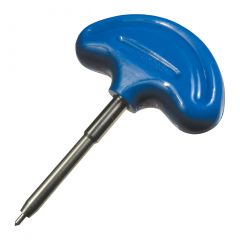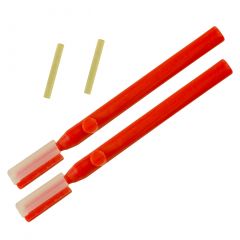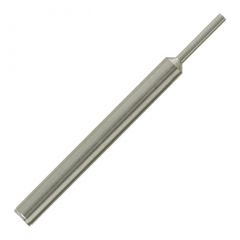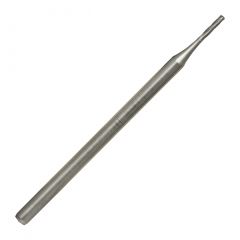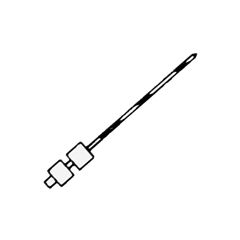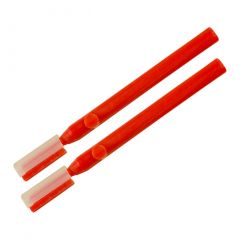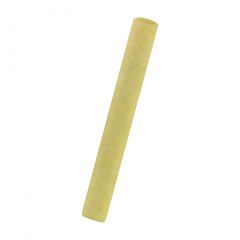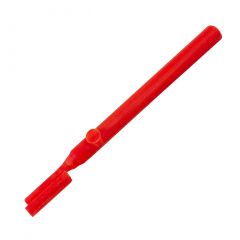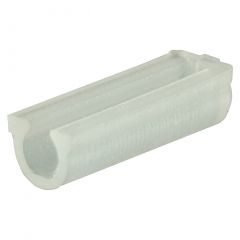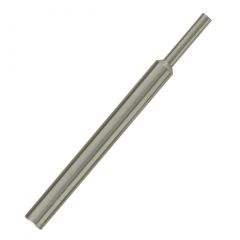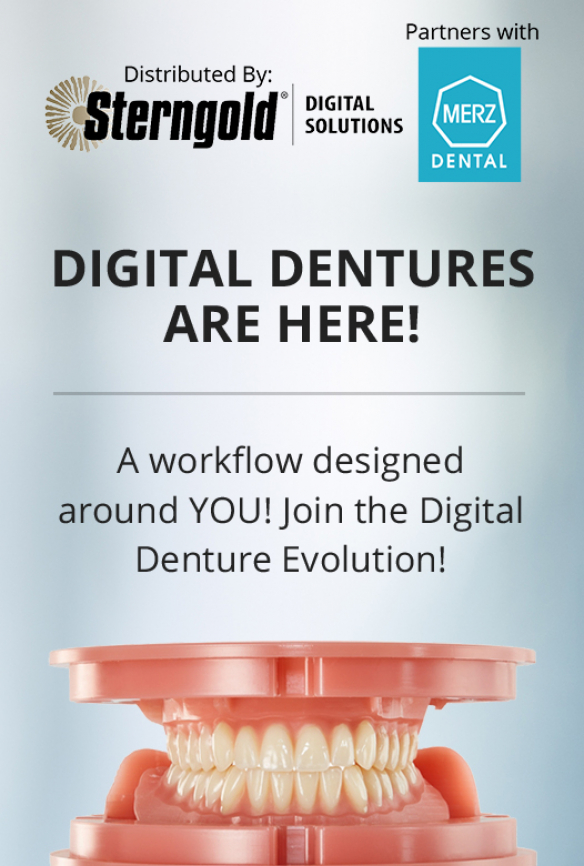Shop By
Overdenture support options are getting better and more affordable! Sterngold is the largest Overdenture supplier in the U.S., as well as a leader in restorative dentistry products and applications. Our products include the ERA, ORA, SNAP, and SNAP Angled implant abutments. The ERA Direct & Castable, Dalla Bona, and Stern Root Stud and Anchor Attachments, and Hader, LV HOR, LV OCAD, and LV KON Bar Attachments. Trust us to supply you with everything you will need to make your Overdenture case a breeze. We also offer the popular TRU® and PUR® implant lines as well as the industry leading MOR® Mini Implant! With plenty of restorative options to choose from, as well as surgical kits and tools, you will be fully equipped to handle any overdenture case. Sterngold prides itself on outstanding customer and technical support & education. We will help YOU ensure case success and overall patient satisfaction!
Anchoring an overlay denture to retained roots enhances denture stability and provides numerous functional advantages. Radicular Stud Overdenture Attachments are available with both rigid or resilient function. Due to compromised periodontal support, resilient designs, such as the ERA®, are more commonly used. Bars splint two or more natural abutments or implants. Attachment function can be rigid or resilient, depending on the bar chosen and on the case design. Intraradicular anchors feature their point of connection inside the root. Because of this they are most often used when bone support is very limited. The following are general guidelines that may be used to help you to decide on which attachment might be best for a particular situation. They are based on 80 years of experience with dental attachments, but the final choice must be based on the particular dentist's philosophy, education, and experience. In most cases teeth to retain overdentures are reduced, approximately to the height of the gingival tissue. The endodontic procedures are completed and any periodontal problems are resolved before the prosthetics begin. If the bone loss is 50% or greater, then the prognosis for these roots is relatively poor. An intraradicular anchor (Stern Root Anchor) will provide the least amount of lateral force to these roots, and therefore, would be the best choice. If the bone loss is in the 50% or less category, radicular studs or bars can be used. Your choice will depend on your philosophy. For many years the conventional wisdom was, splinting abutments with bars made them stronger. Studies done at UCLA and other places have contradicted this opinion. The more recent body of information would tend to indicate that there is less force to the roots or implants from a resilient free standing attachment than when they are connected with a bar. Proper Measurements for Attachments
Sterngold works hard to make using attachments easy for you. In this catalog, we provide our best advice on space requirements based on extensive practical experience.
Each attachment description lists the minimum space required for placement of the attachment, to assure a high rate of success and long-term function. Allowance is already made for restorative materials, such as dental casting alloys or denture acrylic, surrounding and holding the attachment component. With this information you can measure a study cast and decide if an attachment can be used in the available space.
These allowances are:
• Denture acrylic thickness occlusal to extracoronal attachment components, bars and overdenture attachments (influences Height), 1mm
• Denture acrylic thickness lateral to attachment components (influences Removable Component Width), 1mm on each side.
• Casting alloy thickness between a box preparation axial wall and a metal, intracoronal, precision attachment female (influences Prep Depth), 0.4mm
• Casting alloy thickness for root cap coping (influences Height), 0.5mm.
Working with Metal Attachments
Depending on the attachment's design, metal components are anchored in denture acrylic, soldered to a casting, or invested along with a wax pattern and cast against with a dental alloy. Use an alloy with a casting temperature at least 100°F (40°C) below the lowest value of the component's melting range when casting against an attachment component.
Melting Ranges of Attachments
Ceramacast components
Degrees F: 2600-2760
Degrees C: 1425-1515
Ceramicor components
Degrees F: 2550-2715
Degrees C: 1400-1490
Doral components
Degrees F: 1705-1860
Degrees C: 930-1015
Elitor components
Degrees F: 1615-1725
Degrees C: 880-940
Iridium-platinum components
Degrees F: 3300-3360
Degrees C: 1820-1850
NPS components
Degrees F: 2700-2850
Degrees C: 1480-1565
OSV components
Degrees F: 1885-2010
Degrees C: 1030-1100
Anchoring an overlay denture to retained roots enhances denture stability and provides numerous functional advantages. Radicular Stud Overdenture Attachments are available with both rigid or resilient function. Due to compromised periodontal support, resilient designs, such as the ERA®, are more commonly used. Bars splint two or more natural abutments or implants. Attachment function can be rigid or resilient, depending on the bar chosen and on the case design. Intraradicular anchors feature their point of connection inside the root. Because of this they are most often used when bone support is very limited. The following are general guidelines that may be used to help you to decide on which attachment might be best for a particular situation. They are based on 80 years of experience with dental attachments, but the final choice must be based on the particular dentist's philosophy, education, and experience. In most cases teeth to retain overdentures are reduced, approximately to the height of the gingival tissue. The endodontic procedures are completed and any periodontal problems are resolved before the prosthetics begin. If the bone loss is 50% or greater, then the prognosis for these roots is relatively poor. An intraradicular anchor (Stern Root Anchor) will provide the least amount of lateral force to these roots, and therefore, would be the best choice. If the bone loss is in the 50% or less category, radicular studs or bars can be used. Your choice will depend on your philosophy. For many years the conventional wisdom was, splinting abutments with bars made them stronger. Studies done at UCLA and other places have contradicted this opinion. The more recent body of information would tend to indicate that there is less force to the roots or implants from a resilient free standing attachment than when they are connected with a bar. Proper Measurements for Attachments
Sterngold works hard to make using attachments easy for you. In this catalog, we provide our best advice on space requirements based on extensive practical experience.
Each attachment description lists the minimum space required for placement of the attachment, to assure a high rate of success and long-term function. Allowance is already made for restorative materials, such as dental casting alloys or denture acrylic, surrounding and holding the attachment component. With this information you can measure a study cast and decide if an attachment can be used in the available space.
These allowances are:
• Denture acrylic thickness occlusal to extracoronal attachment components, bars and overdenture attachments (influences Height), 1mm
• Denture acrylic thickness lateral to attachment components (influences Removable Component Width), 1mm on each side.
• Casting alloy thickness between a box preparation axial wall and a metal, intracoronal, precision attachment female (influences Prep Depth), 0.4mm
• Casting alloy thickness for root cap coping (influences Height), 0.5mm.
Working with Metal Attachments
Depending on the attachment's design, metal components are anchored in denture acrylic, soldered to a casting, or invested along with a wax pattern and cast against with a dental alloy. Use an alloy with a casting temperature at least 100°F (40°C) below the lowest value of the component's melting range when casting against an attachment component.
Melting Ranges of Attachments
Ceramacast components
Degrees F: 2600-2760
Degrees C: 1425-1515
Ceramicor components
Degrees F: 2550-2715
Degrees C: 1400-1490
Doral components
Degrees F: 1705-1860
Degrees C: 930-1015
Elitor components
Degrees F: 1615-1725
Degrees C: 880-940
Iridium-platinum components
Degrees F: 3300-3360
Degrees C: 1820-1850
NPS components
Degrees F: 2700-2850
Degrees C: 1480-1565
OSV components
Degrees F: 1885-2010
Degrees C: 1030-1100

